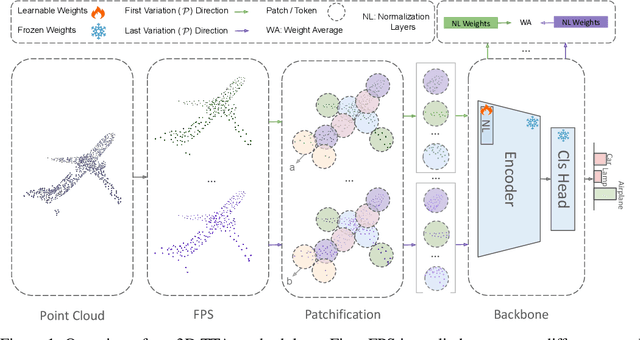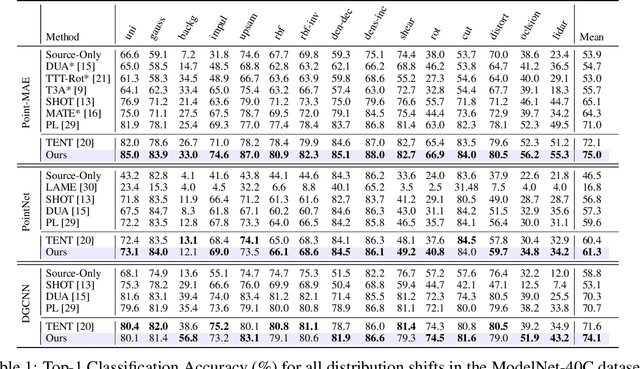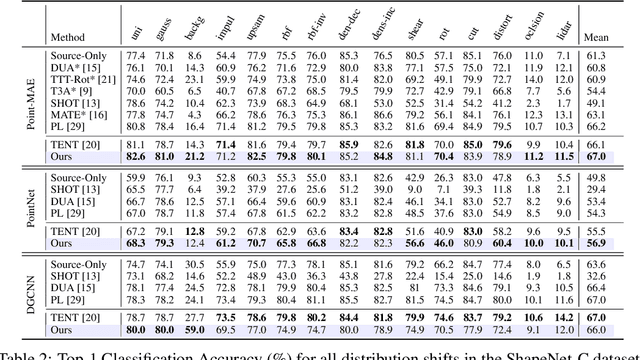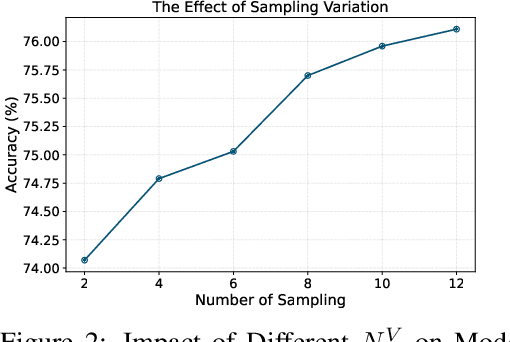Farzad Beizaee
Correcting Deviations from Normality: A Reformulated Diffusion Model for Multi-Class Unsupervised Anomaly Detection
Mar 25, 2025Abstract:Recent advances in diffusion models have spurred research into their application for Reconstruction-based unsupervised anomaly detection. However, these methods may struggle with maintaining structural integrity and recovering the anomaly-free content of abnormal regions, especially in multi-class scenarios. Furthermore, diffusion models are inherently designed to generate images from pure noise and struggle to selectively alter anomalous regions of an image while preserving normal ones. This leads to potential degradation of normal regions during reconstruction, hampering the effectiveness of anomaly detection. This paper introduces a reformulation of the standard diffusion model geared toward selective region alteration, allowing the accurate identification of anomalies. By modeling anomalies as noise in the latent space, our proposed Deviation correction diffusion (DeCo-Diff) model preserves the normal regions and encourages transformations exclusively on anomalous areas. This selective approach enhances the reconstruction quality, facilitating effective unsupervised detection and localization of anomaly regions. Comprehensive evaluations demonstrate the superiority of our method in accurately identifying and localizing anomalies in complex images, with pixel-level AUPRC improvements of 11-14% over state-of-the-art models on well known anomaly detection datasets. The code is available at https://github.com/farzad-bz/DeCo-Diff
Spectral State Space Model for Rotation-Invariant~Visual~Representation~Learning
Mar 09, 2025Abstract:State Space Models (SSMs) have recently emerged as an alternative to Vision Transformers (ViTs) due to their unique ability of modeling global relationships with linear complexity. SSMs are specifically designed to capture spatially proximate relationships of image patches. However, they fail to identify relationships between conceptually related yet not adjacent patches. This limitation arises from the non-causal nature of image data, which lacks inherent directional relationships. Additionally, current vision-based SSMs are highly sensitive to transformations such as rotation. Their predefined scanning directions depend on the original image orientation, which can cause the model to produce inconsistent patch-processing sequences after rotation. To address these limitations, we introduce Spectral VMamba, a novel approach that effectively captures the global structure within an image by leveraging spectral information derived from the graph Laplacian of image patches. Through spectral decomposition, our approach encodes patch relationships independently of image orientation, achieving rotation invariance with the aid of our Rotational Feature Normalizer (RFN) module. Our experiments on classification tasks show that Spectral VMamba outperforms the leading SSM models in vision, such as VMamba, while maintaining invariance to rotations and a providing a similar runtime efficiency.
Spectral Informed Mamba for Robust Point Cloud Processing
Mar 06, 2025Abstract:State space models have shown significant promise in Natural Language Processing (NLP) and, more recently, computer vision. This paper introduces a new methodology leveraging Mamba and Masked Autoencoder networks for point cloud data in both supervised and self-supervised learning. We propose three key contributions to enhance Mamba's capability in processing complex point cloud structures. First, we exploit the spectrum of a graph Laplacian to capture patch connectivity, defining an isometry-invariant traversal order that is robust to viewpoints and better captures shape manifolds than traditional 3D grid-based traversals. Second, we adapt segmentation via a recursive patch partitioning strategy informed by Laplacian spectral components, allowing finer integration and segment analysis. Third, we address token placement in Masked Autoencoder for Mamba by restoring tokens to their original positions, which preserves essential order and improves learning. Extensive experiments demonstrate the improvements of our approach in classification, segmentation, and few-shot tasks over state-of-the-art baselines.
MAD-AD: Masked Diffusion for Unsupervised Brain Anomaly Detection
Feb 24, 2025Abstract:Unsupervised anomaly detection in brain images is crucial for identifying injuries and pathologies without access to labels. However, the accurate localization of anomalies in medical images remains challenging due to the inherent complexity and variability of brain structures and the scarcity of annotated abnormal data. To address this challenge, we propose a novel approach that incorporates masking within diffusion models, leveraging their generative capabilities to learn robust representations of normal brain anatomy. During training, our model processes only normal brain MRI scans and performs a forward diffusion process in the latent space that adds noise to the features of randomly-selected patches. Following a dual objective, the model learns to identify which patches are noisy and recover their original features. This strategy ensures that the model captures intricate patterns of normal brain structures while isolating potential anomalies as noise in the latent space. At inference, the model identifies noisy patches corresponding to anomalies and generates a normal counterpart for these patches by applying a reverse diffusion process. Our method surpasses existing unsupervised anomaly detection techniques, demonstrating superior performance in generating accurate normal counterparts and localizing anomalies. The code is available at hhttps://github.com/farzad-bz/MAD-AD.
Test-Time Adaptation in Point Clouds: Leveraging Sampling Variation with Weight Averaging
Nov 02, 2024



Abstract:Test-Time Adaptation (TTA) addresses distribution shifts during testing by adapting a pretrained model without access to source data. In this work, we propose a novel TTA approach for 3D point cloud classification, combining sampling variation with weight averaging. Our method leverages Farthest Point Sampling (FPS) and K-Nearest Neighbors (KNN) to create multiple point cloud representations, adapting the model for each variation using the TENT algorithm. The final model parameters are obtained by averaging the adapted weights, leading to improved robustness against distribution shifts. Extensive experiments on ModelNet40-C, ShapeNet-C, and ScanObjectNN-C datasets, with different backbones (Point-MAE, PointNet, DGCNN), demonstrate that our approach consistently outperforms existing methods while maintaining minimal resource overhead. The proposed method effectively enhances model generalization and stability in challenging real-world conditions.
Harmonizing Flows: Leveraging normalizing flows for unsupervised and source-free MRI harmonization
Jul 22, 2024Abstract:Lack of standardization and various intrinsic parameters for magnetic resonance (MR) image acquisition results in heterogeneous images across different sites and devices, which adversely affects the generalization of deep neural networks. To alleviate this issue, this work proposes a novel unsupervised harmonization framework that leverages normalizing flows to align MR images, thereby emulating the distribution of a source domain. The proposed strategy comprises three key steps. Initially, a normalizing flow network is trained to capture the distribution characteristics of the source domain. Then, we train a shallow harmonizer network to reconstruct images from the source domain via their augmented counterparts. Finally, during inference, the harmonizer network is updated to ensure that the output images conform to the learned source domain distribution, as modeled by the normalizing flow network. Our approach, which is unsupervised, source-free, and task-agnostic is assessed in the context of both adults and neonatal cross-domain brain MRI segmentation, as well as neonatal brain age estimation, demonstrating its generalizability across tasks and population demographics. The results underscore its superior performance compared to existing methodologies. The code is available at https://github.com/farzad-bz/Harmonizing-Flows
WATT: Weight Average Test-Time Adaptation of CLIP
Jun 24, 2024



Abstract:Vision-Language Models (VLMs) such as CLIP have yielded unprecedented performance for zero-shot image classification, yet their generalization capability may still be seriously challenged when confronted to domain shifts. In response, we present Weight Average Test-Time Adaptation (WATT) of CLIP, a pioneering approach facilitating full test-time adaptation (TTA) of this VLM. Our method employs a diverse set of templates for text prompts, augmenting the existing framework of CLIP. Predictions are utilized as pseudo labels for model updates, followed by weight averaging to consolidate the learned information globally. Furthermore, we introduce a text ensemble strategy, enhancing overall test performance by aggregating diverse textual cues. Our findings underscore the efficacy of WATT in enhancing performance across diverse datasets, including CIFAR-10-C, CIFAR-10.1, CIFAR-100-C, VisDA-C, and several other challenging datasets, effectively covering a wide range of domain shifts. Notably, these enhancements are achieved without necessitating additional model transformations or trainable modules. Moreover, compared to other Test-Time Adaptation methods, our approach can operate effectively with just a single image. Highlighting the potential of innovative test-time strategies, this research emphasizes their role in fortifying the adaptability of VLMs. The implementation is available at: \url{https://github.com/Mehrdad-Noori/WATT.git}.
WATT: Weight Average Test-Time Adaption of CLIP
Jun 19, 2024



Abstract:Vision-Language Models (VLMs) such as CLIP have yielded unprecedented performance for zero-shot image classification, yet their generalization capability may still be seriously challenged when confronted to domain shifts. In response, we present Weight Average Test-Time Adaptation (WATT) of CLIP, a pioneering approach facilitating full test-time adaptation (TTA) of this VLM. Our method employs a diverse set of templates for text prompts, augmenting the existing framework of CLIP. Predictions are utilized as pseudo labels for model updates, followed by weight averaging to consolidate the learned information globally. Furthermore, we introduce a text ensemble strategy, enhancing overall test performance by aggregating diverse textual cues. Our findings underscore the efficacy of WATT in enhancing performance across diverse datasets, including CIFAR-10-C, CIFAR-10.1, CIFAR-100-C, VisDA-C, and several other challenging datasets, effectively covering a wide range of domain shifts. Notably, these enhancements are achieved without necessitating additional model transformations or trainable modules. Moreover, compared to other Test-Time Adaptation methods, our approach can operate effectively with just a single image. Highlighting the potential of innovative test-time strategies, this research emphasizes their role in fortifying the adaptability of VLMs. The implementation is available at: \url{https://github.com/Mehrdad-Noori/WATT.git}.
GeoMask3D: Geometrically Informed Mask Selection for Self-Supervised Point Cloud Learning in 3D
May 20, 2024Abstract:We introduce a pioneering approach to self-supervised learning for point clouds, employing a geometrically informed mask selection strategy called GeoMask3D (GM3D) to boost the efficiency of Masked Auto Encoders (MAE). Unlike the conventional method of random masking, our technique utilizes a teacher-student model to focus on intricate areas within the data, guiding the model's focus toward regions with higher geometric complexity. This strategy is grounded in the hypothesis that concentrating on harder patches yields a more robust feature representation, as evidenced by the improved performance on downstream tasks. Our method also presents a complete-to-partial feature-level knowledge distillation technique designed to guide the prediction of geometric complexity utilizing a comprehensive context from feature-level information. Extensive experiments confirm our method's superiority over State-Of-The-Art (SOTA) baselines, demonstrating marked improvements in classification, and few-shot tasks.
Harmonizing Flows: Unsupervised MR harmonization based on normalizing flows
Jan 27, 2023Abstract:In this paper, we propose an unsupervised framework based on normalizing flows that harmonizes MR images to mimic the distribution of the source domain. The proposed framework consists of three steps. First, a shallow harmonizer network is trained to recover images of the source domain from their augmented versions. A normalizing flow network is then trained to learn the distribution of the source domain. Finally, at test time, a harmonizer network is modified so that the output images match the source domain's distribution learned by the normalizing flow model. Our unsupervised, source-free and task-independent approach is evaluated on cross-domain brain MRI segmentation using data from four different sites. Results demonstrate its superior performance compared to existing methods.
 Add to Chrome
Add to Chrome Add to Firefox
Add to Firefox Add to Edge
Add to Edge